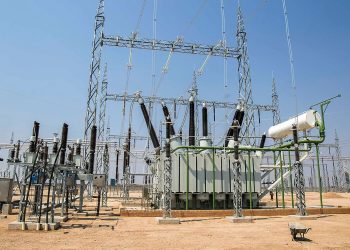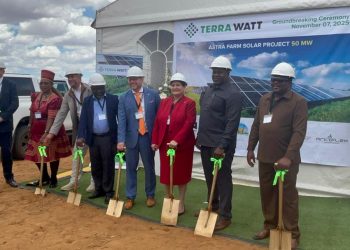
NamPower Managing Director Simson Haulofu says the national power utility supports the development of a nuclear power plant in Namibia and is ready to provide technical input to government.
This follows a recent call by Namibian President Netumbo Nandi-Ndaitwah for collective efforts towards establishing a nuclear power plant to drive economic growth.
“It is about time. The new government is speaking in the right direction. We are in a position to engage with the government, offer our technical expertise, and assist in identifying potential global technical partners for collaboration. We have some ideas,” Haulofu told Namibia Mining and Energy.
He said while the idea of a nuclear power plant in Namibia is not new, significant groundwork remains to be done—particularly in the development of appropriate legislation and regulations for nuclear energy.
Haulofu said NamPower has identified various global nuclear technologies that would integrate well with Namibia’s existing grid infrastructure.
He also highlighted Namibia’s strategic advantage as a major producer of uranium—the primary fuel source for nuclear power plants.
“As the national power utility, we must advise the government on how to approach this initiative. While we don’t yet have all the answers, we are learning alongside this process. However, our greatest advantage is that we are a country producing the raw material needed for nuclear power,” he said.
Namibia is projected to export approximately N$41.4 billion worth of uranium this year, amid increasing global demand due to renewed interest in nuclear energy.
“Our resources have long been extracted by others to power their nations and economies, while we remain reliant on imports and small-scale domestic schemes,” Haulofu added.
He explained that Small Modular Reactors (SMRs) could contribute about 300 MW to the national grid, while larger nuclear power plants can generate in excess of 1,000 MW.
Haulofu also noted that nuclear power could support NamPower’s strategic goal of generating approximately 70% of the country’s electricity from renewable sources by 2030.
“Namibia benefits from some of the highest solar radiation in the world, and we also have wind potential. However, these are intermittent energy sources. To stabilise the grid, we need dispatchable generation capacity. The grid cannot rely on renewables alone—we require foundational power sources such as nuclear, gas, hydro, coal and others. The introduction of nuclear power would enable the deployment of even more renewable energy than is currently feasible without sufficient dispatchable capacity,” he said.







